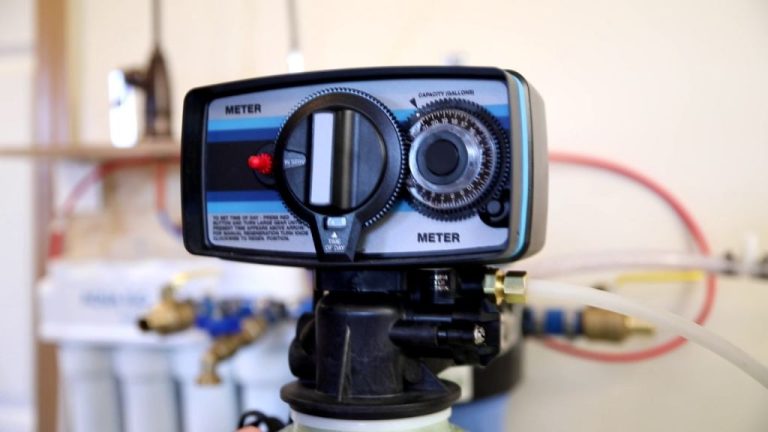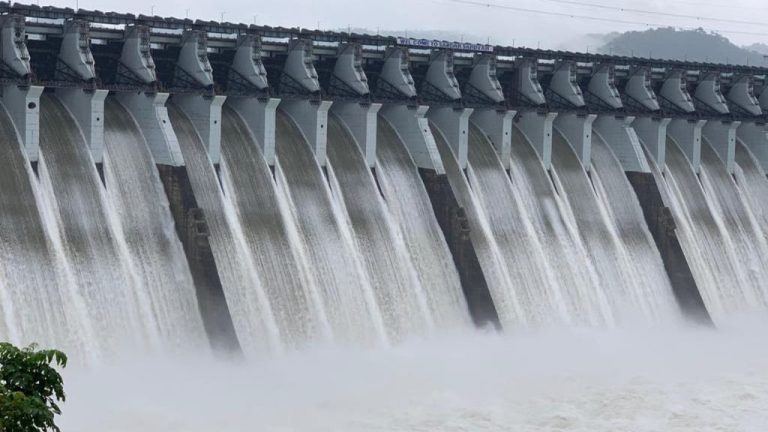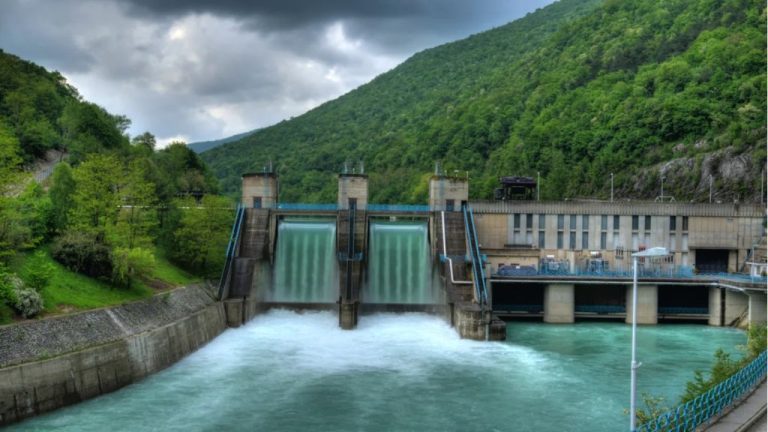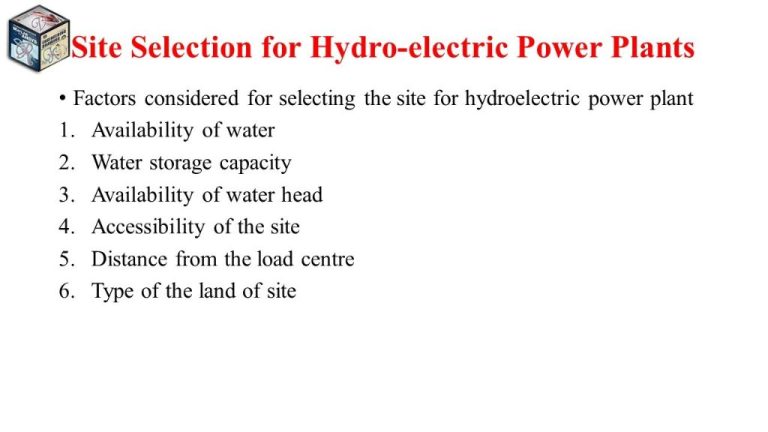What Energy Is Produced By Hydropower?
What is Hydropower?
Hydropower is the process of using the kinetic energy from flowing or falling water to generate electricity. A hydropower plant captures the energy of flowing water to produce mechanical power which is converted into electric power by a generator.
The use of hydropower dates back thousands of years, with early examples including the use of water wheels to grind grains into flour. In the late 19th century, hydropower began being harnessed on a larger scale for electricity generation. One of the first hydroelectric plants was built at Niagara Falls in 1879. The early 20th century saw major developments in hydropower, including large dam projects like the Hoover Dam completed in 1936. Many dams were built in the Columbia River system in the 1930s-1960s to produce hydropower electricity and facilitate irrigation, navigation and flood control. Major projects included Grand Coulee Dam, Bonneville Dam, and John Day Dam among others (Source).
Hydropower Process
Hydropower facilities use a dam to store water in a reservoir. The water from the reservoir flows through an intake and pushes against turbine blades inside the hydropower plant. This causes the turbine shaft to rotate, which spins a generator to produce electricity.
More specifically, the process works like this:
- A dam is built to store water in a reservoir.
- Water in the reservoir flows through a turbine at a controlled rate. The flowing water hits turbine blades, causing them to spin.
- The spinning turbine turns a shaft inside a generator. This spins magnets within coils of copper wire, producing an electric current.
- The electricity is then fed into transmission lines and distributed.
So in summary, the dam stores potential energy in the reservoir. The water’s movement turns the turbines, creating mechanical energy. And the generators convert that mechanical energy into electrical energy for use.
Sources:
[2] https://www.kqed.org/quest/72528/how-hydropower-dams-work
Types of Hydropower
There are three main types of hydropower plants: impoundment (dam), diversion (run-of-river), and pumped storage.
Impoundment hydropower plants are the most common type of hydropower plant. They utilize a dam built across a river to store water in a reservoir. The water stored in the reservoir has potential energy. This energy gets converted into kinetic energy as the water travels through the penstock and turns the turbines to produce electricity. Some examples of impoundment plants are the Hoover Dam on the Colorado River and the Three Gorges Dam on the Yangtze River in China (Types of Hydropower Plants).
Diversion hydropower plants, sometimes called run-of-river plants, channel a portion of a river through a canal or penstock. This does not require the use of a dam for water storage. The moving water rotates the turbines to produce electricity. Diversion hydropower plants have less environmental impact than dams but their energy generation depends on seasonal water flows (Types of Hydropower Plants).
Pumped storage hydropower plants pump water from a lower reservoir to an upper reservoir for storage. During periods of high electricity demand, the stored water gets released to flow through turbines to generate electricity. Pumped storage allows energy from intermittent sources like wind and solar to be stored as potential energy and dispatched when needed (Types of Hydropower Plants).
Hydropower Capacity
Hydropower accounts for about 7% of total electricity generation in the United States, according to a study by the International Hydropower Association (IHA) and Asian Infrastructure Investment Bank (AIIB). As of 2020, China has the most installed hydropower capacity in the world at over 350 gigawatts, followed by Brazil, Canada, and the United States.
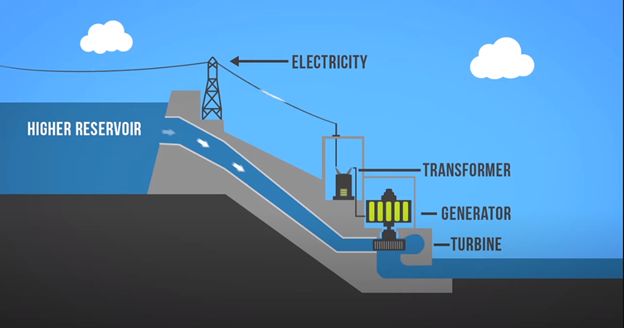
The top five countries for hydropower generation are China, Brazil, Canada, the United States, and Russia. Together, these five countries account for over 50% of installed capacity worldwide. The IHA/AIIB study found that many hydropower plants, especially in Asia, are aging and in need of upgrades and modernization.
While most large-scale hydropower resources in developed countries have already been utilized, developing countries still have significant potential for new projects. The IHA/AIIB study recommended over $50 billion in investments to modernize existing Asian hydropower infrastructure over the next decade.
Sources:
https://energy.economictimes.indiatimes.com/news/power/research-identifies-need-for-multi-billion-dollar-investments-in-asian-hydropower-modernisation/77886122
http://www.waterpowermagazine.com/news/newsnew-study-by-iha-identifies-asian-hydropower-plants-that-could-benefit-from-modernisation-8113047
Hydropower Advantages
Hydropower is a renewable energy source, meaning it will not run out like fossil fuels. The energy from flowing water is continuously replenished through the natural water cycle [1]. Once hydropower facilities are constructed, they can reliably generate electricity for decades with low operating and maintenance costs. Hydropower is considered one of the most reliable energy sources because its generation capacity is dependent on the hydrologic cycle rather than external fuel costs or environmental conditions [2].
Unlike wind or solar power which rely on favorable weather conditions to generate electricity, hydropower can produce a consistent supply of energy. Reservoirs with storage capabilities allow hydropower plants to generate electricity on demand when energy use is highest. This makes hydropower a flexible grid resource. The storage from hydropower facilities also provides a backup energy supply during major electricity outages or disruptions [1].
Hydropower has one of the lowest levelized costs of energy production compared to other energy sources, largely due to its minimal fuel costs and longevity of infrastructure. Maintenance costs are lower than fossil fuel plants because there are no fuel costs and hydropower equipment lasts for decades [2]. The renewable nature and efficiency of hydropower make it a sustainable long-term energy solution.
Hydropower Disadvantages
While hydropower offers many benefits, it also comes with some drawbacks that need to be considered. Some of the main disadvantages of hydropower include:
- High upfront costs – Building hydropower plants and dams requires significant investment. The costs of site preparation, construction materials, turbines and generators can be very high.
- Impact on rivers and wildlife – Dams disrupt the natural flow of rivers and can negatively impact the ecosystems and habitats of various wildlife species, especially fish and waterfowl. Large reservoirs formed by dams also inundate forests, agricultural land and scenic areas.
- Drought vulnerability – Hydropower output depends on adequate water flows and levels. During drought conditions when water levels are low, electricity generation can be greatly reduced. This can lead to power shortages if alternative energy sources are not available.
While developers try to mitigate the environmental impacts, hydropower projects often face opposition because of the drastic changes they cause to rivers and surrounding areas. Proper site selection, fish ladders and habitat conservation measures can help, but altering natural water systems will always impact local flora and fauna.
Reference: https://www.reddit.com/r/tabled/
Major Hydropower Projects
Some of the largest hydropower dams in the world include:
The Three Gorges Dam in China, which spans the Yangtze River, is currently the world’s largest power station in terms of installed capacity at 22,500 MW. The project was controversial due to its massive size, displacement of over a million people, and environmental impacts, but now generates around one tenth of China’s total hydropower electricity output (Source).
The Itaipu Dam on the Paraná River border between Brazil and Paraguay is the world’s second largest hydroelectric power station, with an installed generation capacity of 14,000 MW. The dam produces roughly 17% of the electricity consumed in Brazil and 77% of the electricity consumed in Paraguay (Source).
The Grand Coulee Dam in Washington state, U.S. is one of the world’s largest concrete structures and was the largest power station in the world when it was completed in 1942. Its six power plants can generate over 6,800 MW of electricity for the Pacific Northwest region (Source).
Small-Scale Hydropower
Small-scale hydropower projects generate up to 10 megawatts of electricity and can provide clean, renewable power solutions for isolated rural areas. There are several types of small-scale hydropower systems:
Micro hydropower plants generate under 100 kilowatts and can provide electricity to rural or remote areas that lack connection to the main electrical grid. These systems often utilize “run-of-river” designs that divert a portion of a river’s flow through a turbine without the need for dams or reservoirs. Micro hydropower can provide affordable, decentralized electricity for individual homes, villages, or industrial operations in off-grid regions (SSWM.info).
Low impact run-of-river projects utilize the natural flow of rivers to generate 1-10 megawatts of electricity. These systems divert water through a canal or penstock to spin a turbine before discharging the water back into the river further downstream. Run-of-river systems have a relatively low environmental impact compared to conventional hydropower dams (Azimov 2022).
Community hydropower models allow local citizens to collectively invest in and benefit from small-scale hydropower in their region. These community-owned projects not only generate electricity, but also income, jobs, and renewable energy education for rural communities (NHA, 2023).
Future of Hydropower
Hydropower is expected to continue playing a major role in renewable energy growth in the coming years. With increasing focus on reducing greenhouse gas emissions and mitigating climate change, hydropower offers a reliable source of clean renewable energy (Power Technology). Upgrades and modernizations to existing hydropower infrastructure can further increase capacity and efficiency.
Many existing hydropower facilities are aging and require upgrades to maintain and increase energy production. Retrofitting turbines, generators, and other equipment can significantly boost output. Digitalization and use of smart systems can also optimize operations (Demirbas, 2007).
At the same time, emphasis is being placed on mitigating the potential environmental impacts of hydropower projects. Efforts like maintaining minimum water flows, installing fish ladders, and preserving downstream sediment transport aim to protect local ecosystems. More sustainable practices can allow hydropower to expand while safeguarding biodiversity.
Conclusion
In summary, hydropower is an important renewable energy source that generates electricity through the force of moving water. Hydropower facilities capture the energy of flowing water by diverting it through turbines connected to generators. The most common types of hydropower facilities are impoundment, diversion, and pumped storage.
Globally, hydropower accounts for around 16% of total electricity generation capacity. The top countries for installed hydropower capacity are China, Brazil, Canada, the United States, and Russia. Advantages of hydropower include its renewability, low operating costs, and ability to quickly adjust output to meet demand. Disadvantages are its high upfront costs, potential environmental impacts, and reliance on suitable geography and water flow.
Major hydropower projects can generate thousands of megawatts of power, while small-scale hydropower projects generate up to 30 megawatts. Hydropower is expected to continue growing in the future, especially micro and small-scale projects. Overall, hydropower provides a major source of clean, renewable electricity around the world.

